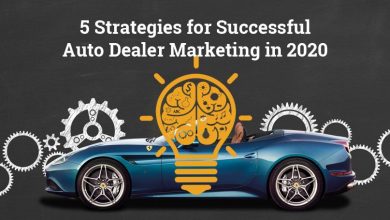Optimizing Automotive Blog Posts for SEO: Driving Online Success
In the fast-paced digital world, the automotive industry relies heavily on online visibility and engagement to reach a wider audience. An effective way to achieve this is through an automotive blog that showcases industry expertise, engages readers, and drives organic traffic to the website. However, having a blog alone is not enough; optimizing automotive blog posts for SEO (Search Engine Optimization) is essential to ensure that the content gets the attention it deserves. In this article, we will explore key strategies to optimize automotive blog posts for SEO, ultimately driving online success for automotive businesses.
Keyword Research: Laying the Foundation
The foundation of any successful SEO strategy lies in comprehensive keyword research. Identify relevant keywords and phrases related to the automotive industry, your niche, and target audience. Use tools like Google Keyword Planner, SEMrush, or Ahrefs to discover high-volume and low-competition keywords. Incorporate these keywords strategically into your blog posts to improve search engine rankings and increase organic traffic.
Engaging and Relevant Content
While SEO is crucial, the primary focus should always be on creating engaging and relevant content for your audience. Offer informative and valuable insights into automotive topics, industry trends, product reviews, and tips. Engaging content encourages visitors to spend more time on your website, signaling search engines that your blog is worth ranking higher in search results.
SEO-Friendly Blog Post Structure
Structuring your blog posts for optimal SEO impact is vital. Use clear headings, subheadings, and bullet points to break down the content into easily digestible sections. Incorporate target keywords naturally within the content, especially in the title, URL, and meta description. Additionally, use descriptive alt tags for images to enhance accessibility and search engine visibility.
Optimize Meta Tags
Craft compelling meta tags for each blog post, including the title tag and meta description. The title tag should be concise, include the target keyword, and entice readers to click. The meta description should be a concise summary of the blog post, further encouraging users to visit your page.
Internal Linking for Seamless Navigation
Utilize internal linking to connect your blog posts with relevant pages on your website. This practice enhances user experience and helps search engines crawl and index your content more effectively. Linking to related posts or pages within your website also keeps visitors engaged and encourages them to explore more of your content.
Mobile-Friendly Optimization
With the majority of internet users accessing content through mobile devices, it’s crucial to optimize your automotive blog for mobile responsiveness. Google considers mobile-friendliness as a ranking factor, so ensure your blog design adapts smoothly to various screen sizes and devices.
Page Loading Speed
Page loading speed is another critical aspect of SEO. Optimize your blog’s images and code to reduce loading times. Faster-loading pages result in better user experience, lower bounce rates, and improved search engine rankings.
Encourage Social Sharing
Social media shares and engagement can significantly impact SEO. Include social media sharing buttons on your blog posts to encourage readers to share your content with their networks. Increased social shares can lead to more traffic and greater visibility in search engines.
Regularly Update and Refresh Content
Search engines favor fresh and updated content. Regularly update your automotive blog with new posts and refresh existing content to reflect the latest industry trends. Additionally, revisit old posts and optimize them with relevant keywords and information.
In conclusion, optimizing automotive blog posts for SEO is a fundamental aspect of online success in the automotive industry. Through effective keyword research, engaging content, and strategic SEO practices, automotive businesses can enhance their online visibility, attract a broader audience, and establish their authority in the industry. By focusing on user experience, mobile-friendliness, and regular content updates, your automotive blog will thrive in search engine rankings and drive valuable organic traffic to your website. Embrace these SEO strategies, and your automotive blog will be on the road to success in the digital landscape.

